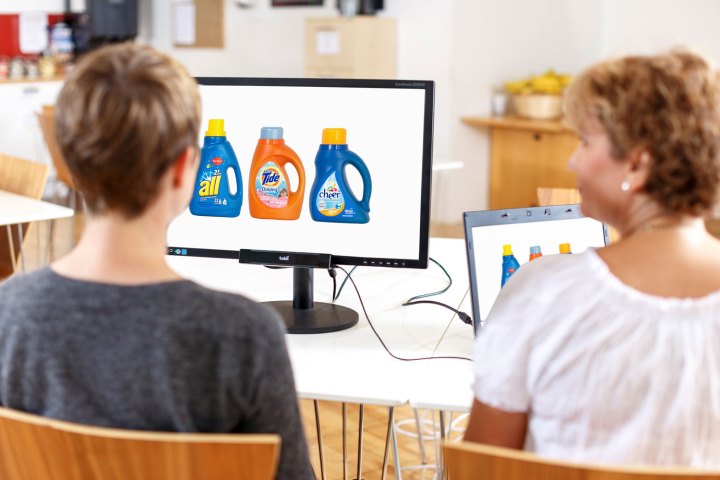
While it sounds useful –and well, it is on the hardware it supports — it hasn’t been adopted as quickly as Microsoft would probably hope. This problem stems from the fact Hello needs a relatively advanced camera in order to work properly. To try and address that, Microsoft has joined with Tobii, a world leader in eye-tracking technology.
Tobii first gained renown several years ago, when it announced a variety of eye-tracking technologies for computers and tablets. We took a look at a demo of its tablet solution back in 2013. While the company hasn’t taken the world by storm, it has been persistent, and Tobii eye tracking sensors have appeared in laptops from HP, Lenovo, and MSI over the years.
This change will make Hello a commonality among a broader range of Windows 10 devices. Any PC makers that use Tobii eye tracking tech already will now be able to take advantage of the same sensor spanning all of their devices equipped with the latest Windows version.
“Available now for peripheral eye trackers on the Tobii IS3 platform, including Tobii EyeX and SteelSeries Sentry devices,” the company wrote in a press release, “facial recognition support for Windows Hello is intended to be standard on all future Tobii eye tracking platforms, including the recently announced Tobii IS4 platform with Tobii EyeChip.”
Tobii Tech urges developers to try Windows Hello out for themselves. If you already has a device with functioning Windows Hello support, all you’ll need to test Tobii’s eye-tracking software is a $140 Tobii EyeX Controller.
Editors' Recommendations
- Windows 11 tips and tricks: 8 hidden settings you need to try
- Beware this fake Windows 11 installer that may harm your PC
- Why your PC might not get today’s Windows 11 update until mid-2022
- How to find your Windows 11 product key
- Windows 10’s update screen will soon tell you if your PC supports Windows 11


